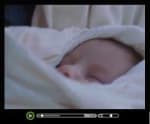Blessed Virgin Mary
Blessed Virgin Mary: Primary Doctrines of the Roman Catholic Church
The Blessed Virgin Mary was the mother of Jesus Christ. In addition to her Biblical biography, there are three primary doctrines that the Roman Catholic Church teaches about Mary: (1) The Immaculate Conception, (2) Mary as co-mediatrix with Jesus Christ, and (3) The Assumption.
Blessed Virgin Mary: The Doctrine of the Immaculate Conception
The doctrine of the Immaculate Conception teaches that the Blessed Virgin Mary was born without original sin. She was a virgin when she conceived Christ, impregnated through the power of the Holy Spirit. In 1854, four years before the apparitions of Mary at Lourdes, Pope Pius IX defined the Dogma of the Immaculate Conception which stated that "the most Blessed Virgin Mary, in the first instant of her conception, by a singular grace and privilege granted by Almighty God, in view of the merits of Jesus Christ, the Savior of the human race, was preserved free from all stain of Original Sin." The Bible teaches that only Jesus Christ, the last Adam, was born without original sin, and all other men and women are born into original sin, inherited from Adam (Romans 5:12).
Furthermore, the Roman Catholic Church teaches that Mary was a virgin during her entire lifetime. Yet Matthew, a Jew writing to Jews, calls Jesus "her firstborn son" (Matthew 1:25), an expression used by Jews only if other children were born after the first one; otherwise, "only son" would have been used. Scholars believe Matthew wrote his gospel about 35 years after the birth of Christ and he evidently knew that Mary had children after Jesus was born. The Bible specifically says that Jesus had brothers and Matthew even tells us their names: "Isn't Mary known to be his mother, and James, Joseph, Simon, and Judas his brothers? Aren't his sisters our neighbors?" (Matthew 13:55-56). Roman Catholic scholars claim that Matthew, Luke and Paul (1 Corinthians 9:5) didn't mean brother when they said brother, but meant cousin. This view is based on the Greek word "adelphos," which can be translated "brother" or "cousin." However, the Jews compared Jesus to His ordinary brothers in an attempt to question the validity of His ministry; it would have been much less compelling to compare Jesus with His cousins.
Blessed Virgin Mary: The Doctrine of Mary as Co-mediatrix with Jesus Christ
The most disturbing doctrine affords the Blessed Virgin Mary a place positionally as co-mediatrix with Jesus Christ. In the words of Pope John Paul II: "In union with Christ and in submission to him, she collaborated in obtaining the grace of salvation for all humanity...In God's plan, Mary is the 'woman' (cf. John 2:4; John 19:26), the New Eve, united to the New Adam in restoring humanity to its original dignity. Her cooperation with her Son continues for all time in the universal motherhood, which she enjoys in the order of grace. Trusting in this maternal cooperation, let us turn to Mary, imploring her help in all our needs."
There is no scriptural basis for placing Mary in a position as co-mediatrix for the church on earth. Christ's words were also very clear on this point: "Jesus answered, "I am the way and the truth and the life. No one comes to the Father except through me" (John 14:6). The doctrine of Mary as co-mediatrix has never been declared by any pope while speaking "ex cathedra," or under the cloak of infallibility. There is currently some pressure within Catholicism for the Holy See to issue such a statement. However, the outcry from Protestantism would shake the foundations of Christianity around the globe, and would be tantamount to the Vatican launching a missile strike against the Ecumenical (Christian unity) movement.
Blessed Virgin Mary: The Doctrine of the Assumption
The Assumption is a doctrine that teaches that the Blessed Virgin Mary had been taken up, body and soul, into heaven. This process is called "translation" in the Bible and there are two notable examples in the scripture, Enoch (Hebrews 11:5) and Elijah (2 Kings 2:11). At the Council of Chalcedon in A.D. 451, when bishops from throughout the Mediterranean met in Constantinople, Emperor Marcian asked the Patriarch of Jerusalem to bring the relics of Mary to Constantinople to be enshrined in the capitol. The patriarch explained to the emperor that there were no relics of Mary in Jerusalem, that "Mary had died in the presence of the apostles; but her tomb, when opened later...was found empty and so the apostles concluded that the body was taken up into heaven." There is no scriptural evidence to support or deny this doctrine as applied to Mary.
Blessed Virgin Mary: Model for Faith, Not Idol for Worship
If the admiration of the Blessed Virgin Mary becomes anything more than using her as a model of faith in God the Father, Roman Catholics delve into dangerous theological territory. The tendency to elevate her to a position of divine status is alarming. Mary can be a model (like Paul or Peter) for our faith, but she is not divine nor is she able to provide for our salvation. Jesus Christ alone is God and is the only person capable of enabling the salvation of all mankind. The Word of God is explicit on this subject.
What is your response?



